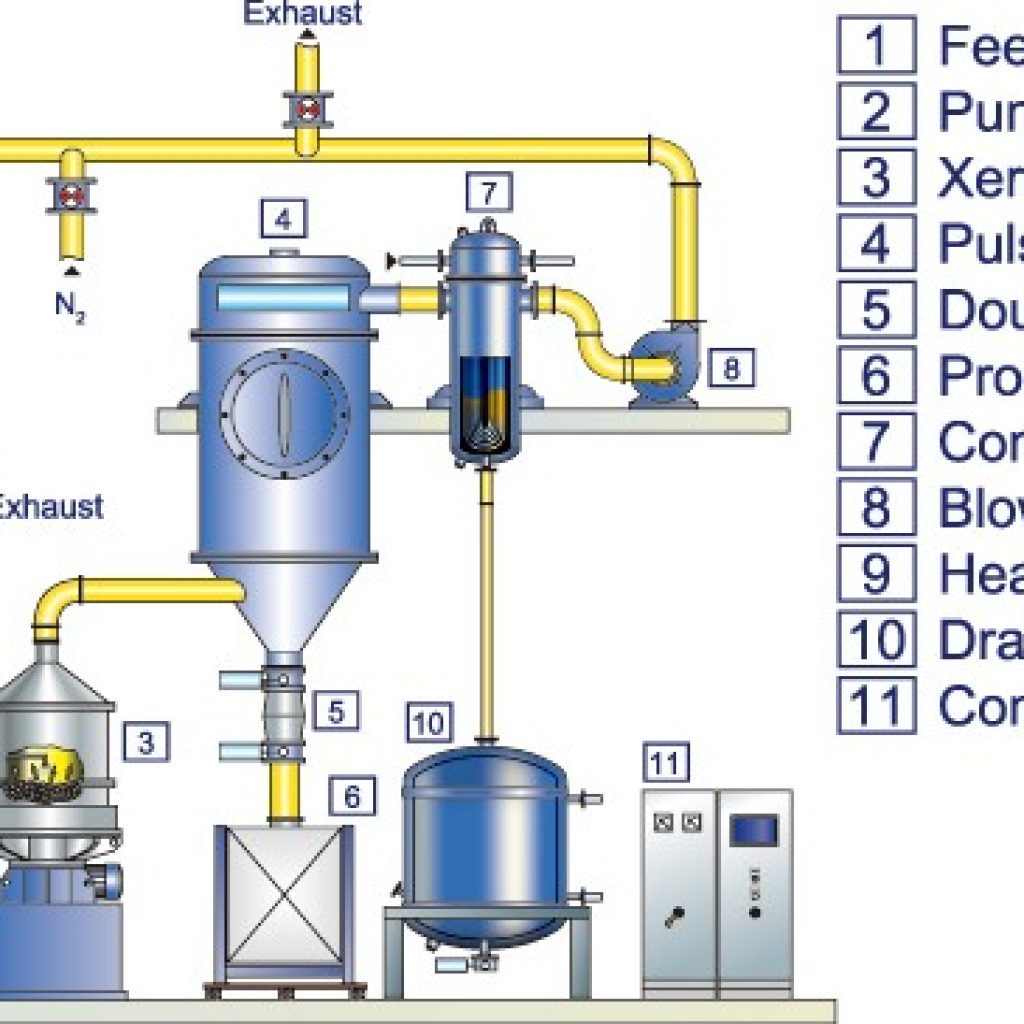This passage will introduce the production flow of producing Iron Phosphate Lithium LiFePO4, one of the leading phosphate based cathode active materials for lithium ion secondary batteries. Recently, Olivine type cathode materials such as LiMPO4 (M: Mn, Mg, Ni) is rapidly being developed and implemented due to its cheap costs and the fact that it does not require any rare metals.
Phosphate based cathodes are synthesized by a calcination reaction under a solid phase method. Its production process is very similar to that of Cobalt based Cathodes. Therefore, the powder processing technologies being utilized are similar as well.
However, most precursors for Phosphate iron Lithium are synthesized using a wet process method, additional new powder processing technologies are utilized to separate and clean the powders from the solutions used during the synthesis of precursors before the calcination process, as well as a drying process.
The primary calcination process is used for increasing crystallization as well as synthesizing the unreacted materials, while the second calcinations process is required for carbon coating.
Drying Process
For synthesizing phosphate iron lithium, depending on the raw material and/or synthesis method, there is a possibility that the viscosity of the solutions will increase. From this occurrence, synthesis of precursors under a wet process sometimes end part way.
Also, for phosphate based materials, the diffusion speed of the lithium ion is slower compared to a cobalt based material, leading to a lower conductivity. Therefore, the primary particles after the calcination process need to be below sub-micron sizes. To fulfill this requirement, while considering the particle size growth during the calcination process, the aggregate formation needs to be prevented during the drying process and prior generation for fine particles are essential. The media mixing type dryer Xerbis which features a zero metal contamination characteristic is the most suitable machine for this process.
Below is the actual reference value of a drying and grinding system (XB-900) for precursor production. While the customer’s requirement was an average particle size of 4μm, we were able to produce products with average sizes of 3μm with the actual unit.
As displayed in flowsheet below, the slurry raw material is fed to the Xerbis XB-900 by a pump. The raw material comes into contact with hot air while on the surface of the media being mixed. Once the moisture evaporates and the slurry solidifies, the solids become detached. This process continues repeatedly.


